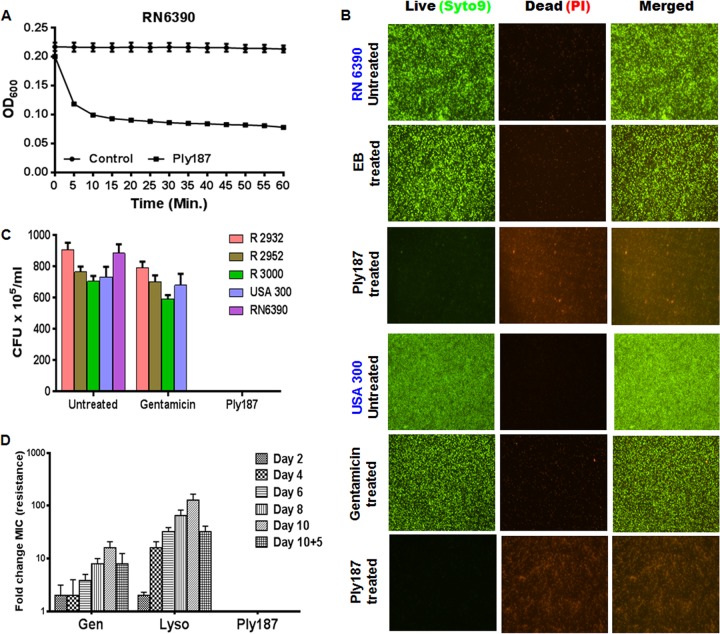FIG 1.
Antibacterial activity, biofilm disruption, and resistance development of the chimeric Ply187 toward S. aureus. (A) A turbidity reduction assay was performed by incubating the S. aureus RN6390 strain with chimeric Ply187 (Table 1) diluted in assay buffer and monitoring the reduction in turbidity every 5 min for up to 1 h. OD600, the optical density at 600 nm. (B) Chimeric Ply187, EB, or gentamicin (for antibiotic-resistant strains) was applied to coverslips containing S. aureus RN6390 or CA-MRSA USA300 biofilms for 30 min. Bacterial killing was assessed via Live/Dead staining and subsequent fluorescence microscopy imaging. (C) The viability of biofilm-associated bacteria was enumerated by CFU counts. (D) A resistance development assay was performed against strain RN6390 by repeated exposure of bacteria (105 CFU/well) to 2-fold serial dilutions of Ply187, gentamicin (Gen), and lysostaphin (Lyso). Cells surviving at half of the MIC were used as an inoculum for each subsequent round of exposure. The change in susceptibility was recorded and is presented as the fold change in the MIC (resistance) from day 1 to 10 of exposure and also after 5 days of growth (without any selection pressure) following the 10th day, represented as 10 + 5. The data represent means ± SEM of two independent experiments performed in triplicate.

